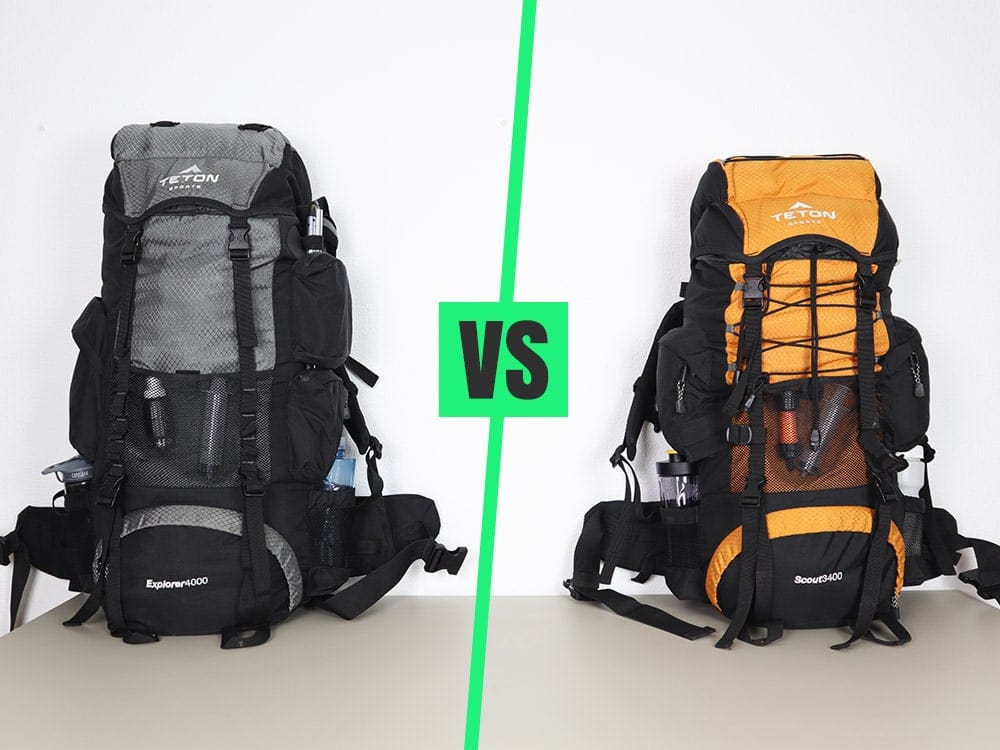The Teton Sports Explorer 4000 (65l) and Scout 3400 (55l) internal frame backpacks both seem so similar, yet are entirely different. The Scout 3400 is smaller and lighter, while the Explorer 4000 has more space and offers slightly better packing features. They’re meant for different types of backpackers, so it’s important to understand which one is right for you.
We purchased both of these packs back in 2020, and we’ve been using both of them occasionally on overnight hikes ever since. In this article, we’ll share our key experiences and lessons learned from using these packs over the last few years, so you can hopefully get a good idea of which one is better suited for you.
Although new models have come out in 2021, (Scout 45l, 55l, 65l, and Explorer 65l, 75l, 85l), they’re still pretty much identical to the older Scout 3400 (now 55l) and Explorer 4000 (now 65l) models, so our comparison is still accurate.
Basic Overview
Teton Sports Scout 3400
- Weight: 4.5 lbs / 2.04 kg
- Dimensions: 30 x 17 x 12 in / 76 x 43 x 30 cm
- Volume: 55 l / 3400 cubic inches
- Materials: 600D Polyester, Aluminum
- Warranty: Limited Lifetime Warranty
- Water-Resistance: Water-resistant fabric, built-in waterproof rain cover
Teton Sports Explorer 4000
- Weight: 5.0 lbs / 2.26 kg
- Dimensions: 32 x 18 x 12 in / 81 x 46 x 30 cm
- Volume: 65 l / 4000 cubic inches
- Materials: 600D Polyester, Aluminum
- Warranty: Limited Lifetime Warranty
- Water-Resistance: Water-resistant fabric, built-in waterproof rain cover
Video
Differences in Weight, Volume, and Size
The Teton Sports Explorer 4000 is essentially a slightly larger version of the Scout 3400. It’s 10 liters larger in volume, it weighs 0.5 lbs (0.23 kg) more, and it’s slightly higher and wider.
Both of these packs definitely weigh on the heavier side. For context, we also own the Osprey Talon 44 internal frame backpack, which weighs only 2.4 lbs (1.1 kg) and is pretty much half of what the Teton packs weigh. However, for beginners, we think that this isn’t really such a big issue. The Talon packs are so heavy because they’re built from durable materials and they come with plenty of padding and supportive elements, which is more important for someone new to hiking.
In terms of volume, we would say that the Scout 3400 is large enough to support most hikes between spring and autumn – we’ve used it even for week-long hikes. If you need to bring winter gear, which is heavier and takes up more space, then the Explorer 4000 is a better choice, especially if you don’t own the most compact and lightweight hiking gear.
Key Differences Between the Teton Sports Scout and Explorer Backpacks
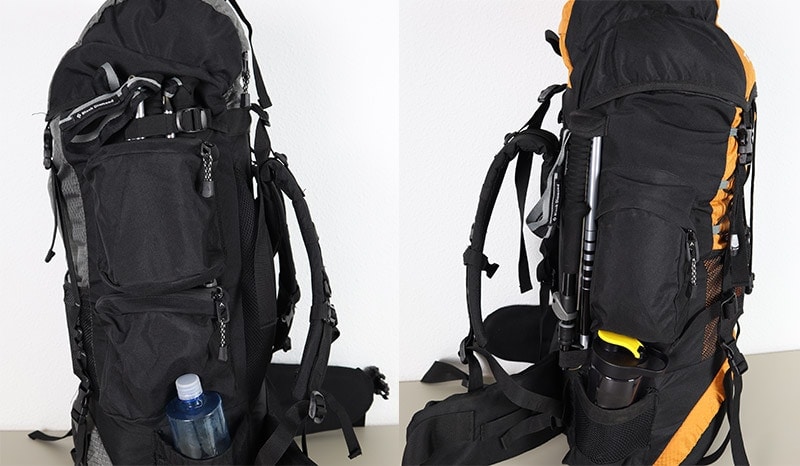
The Teton Sports Explorer 4000 has 3 exterior side pockets in total. On one side it comes with a larger pocket, and on the other, it has two pockets stacked on top of each other. It offers slightly more room to organize all the smaller items compared to the Scout 3400, which comes only with two side pockets.
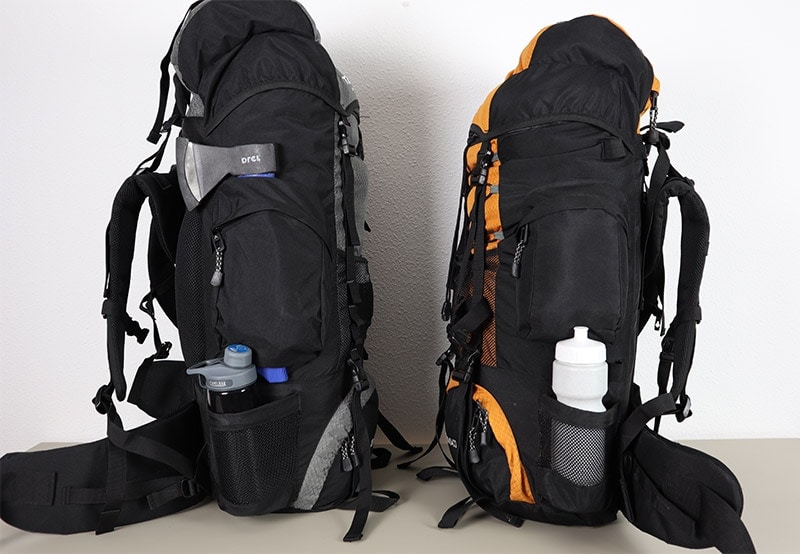
The side pockets on the Explorer 4000 have an open end behind them, which allows you to slide and store long objects behind them, like an axe or trekking poles. This system is really secure, and we really like it, especially when we’re bringing an axe on short overnight hikes. On the Scout 3400, the side pockets are attached permanently. There are stretchy fabric loops on one side of the pocket, where you can also theoretically store trekking poles or an axe, but they aren’t secure enough, and sometimes, the trekking poles may fall out. So the side storage system on the Explorer 4000 is superior compared to the Scout 3400.
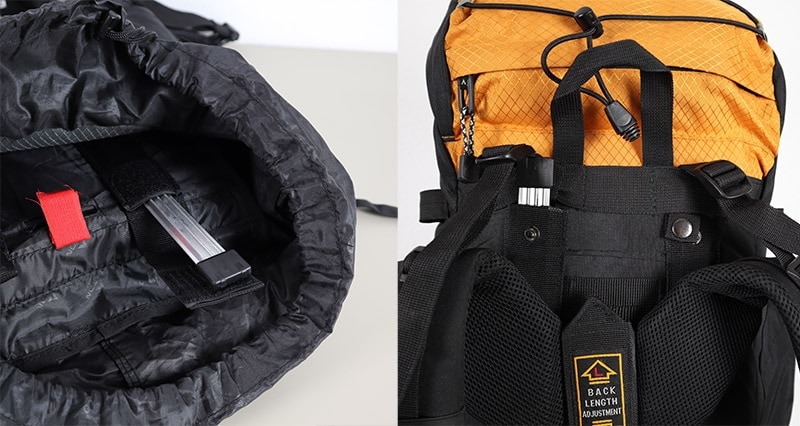
Another difference is that the internal frame is attached to the interior of the Explorer 4000 and to the exterior of the Scout 3400. We haven’t really found either of these solutions to be better than the other one, so no pack is better in that regard. What’s really useful though, is that the aluminum rails used in the internal frame are removable, so you can fit both the Explorer 4000 and Scout 3400 in a washing machine if needed.
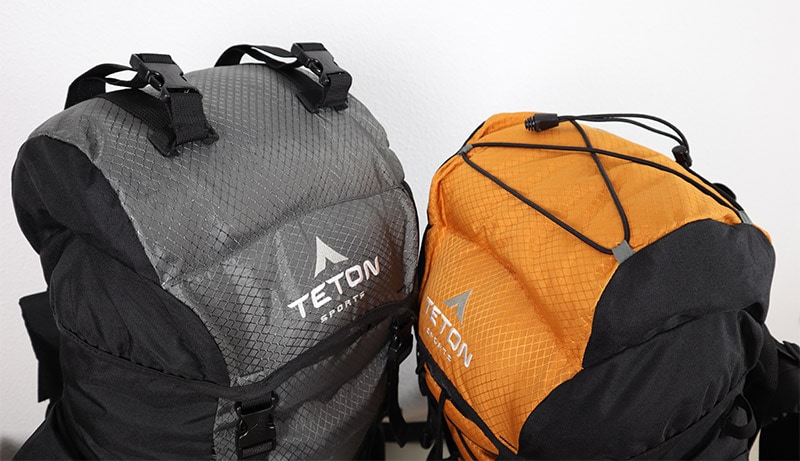
On the top, the Explorer 4000 is fitted with two adjustable straps for attaching something to the top. The Scout 3400, on the other hand, uses a drawstring system. Although the drawstring one is lighter, it’s arguably less secure, so if you’d attach a jacket there, it might get lost. So we definitely prefer the system on the Explorer 4000. Plus, if you don’t plan on using them (since attaching stuff to the top makes the pack less comfortable to carry), you can remove both of the straps on the Explorer 4000, but not on the Scout 3400.
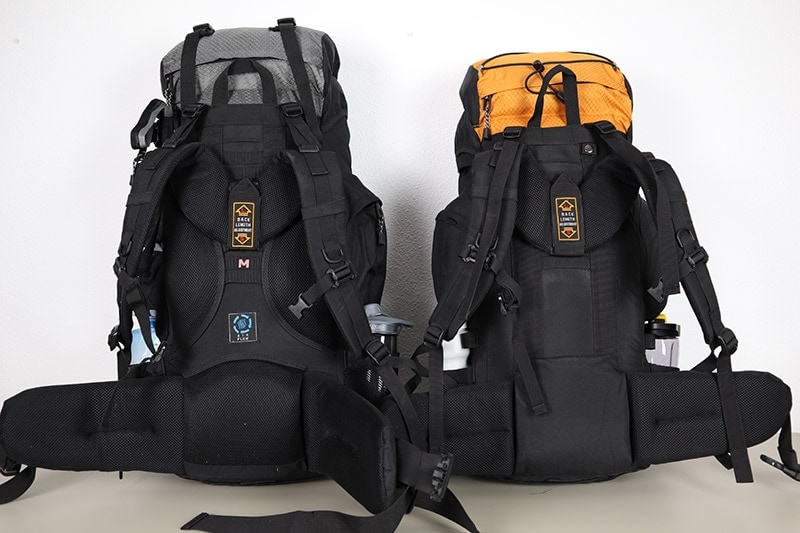
The last major differences between both of these packs hide in the back panel. On the Explorer 4000, there are additional padding panels between the hip belt and the shoulder straps. On Scout 3400, the middle is left empty, which is a much better system. Leaving the middle part open (like it is on the Scout 3400) is better because it doesn’t compromise any comfort, at least from our own experience, and it allows for more ventilation. In simple words, our backs got sweatier when wearing the Explorer 4000 compared to the Scout 3400 due to the lack of ventilation in the middle.
Similar Features Between the Teton Sports Scout 3400 and Explorer 4000
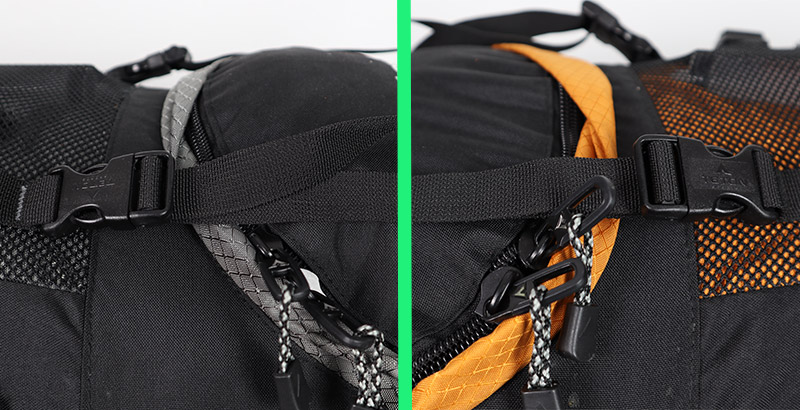
Aside from the side pockets, the top attachment system, and the padded back panel, both the Teton Sports Scout 3400 and Explorer 4000 are very similar.
They come with pretty much identical zippers, straps, and clips. They’re all somewhat beefy and heavy, but from our own experience – also durable. During the first two years of using these packs, we haven’t had any issues with the zippers, straps, or clips, which usually are one of the first things that break on other packs. They’re definitely built for survivalists and cross-country hikers, rather than ultralight hikers.
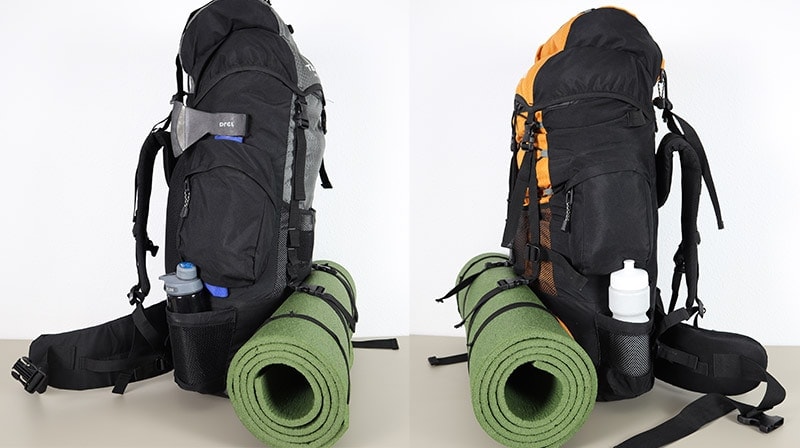
Both of them come with identical side water bottle pockets – one on each side. We personally don’t like them too much because they’re made from too stiff fabric, and it’s somewhat hard to fit a larger water bottle in there. Especially, if you’re trying to do it with one hand while wearing the pack.
At the bottom, both packs have two adjustable compression straps, which are great for attaching a sleeping mat or something similar.
In the middle of the pack, there’s a stretchy mesh pocket for storing something on both packs. However, similar to the water bottle pockets, it’s made from a fabric that isn’t too elastic, so you can’t fit a lot of stuff there.
The shoulder straps, the hip belt, the sternum strap, and the load lifters are also pretty much identical on both packs.
And lastly, the interiors of the Scout 3400 and Explorer 4000 are also very similar. The only difference is that the Scout 3400 has a slightly smaller main compartment, however, both of them are extremely roomy and will fit all the gear needed for most backpackers. They both come with a large bottom sleeping bag compartment, which is accessible from the exterior and can be divided with an unzippable fabric sheet.
Which One Is More Comfortable?
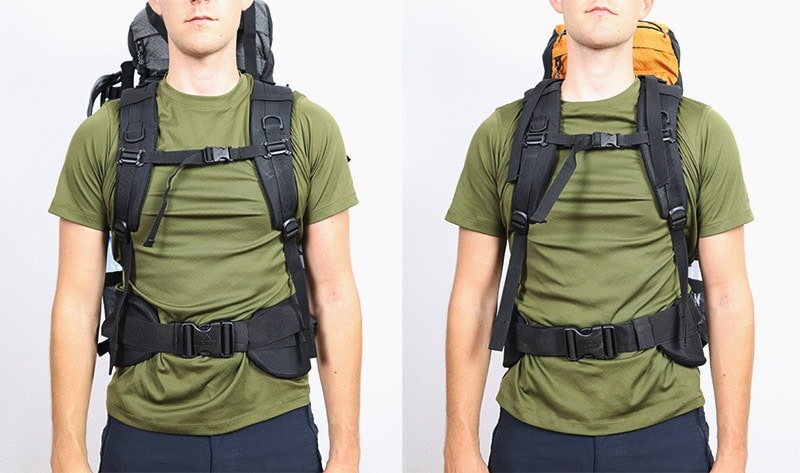
As we already mentioned airlier, the Scout 3400 has pretty much identical chest, hip, sternum belts, and load lifters. So In terms of comfort, the Scout 3400 is just as comfortable as the Explorer 4000, and no model is particularly better than the other.
We would say that the Teton packs are some of the most comfortable backpacks that we’ve worn, especially for carrying very heavy loads. The hip belt and the shoulder straps come with a lot of padding and they’re very rigid, which allows you to equally distribute the weight of the pack on your body. Even when carrying 20-25 kg (44-55 lbs) loads, both of them feel very comfortable.
That’s one of the main reasons why we recommend Teton packs to beginner hikers, who usually carry heavier and bulkier gear. Comfort and back pain management are some of the key factors of enjoying a good hike after all.
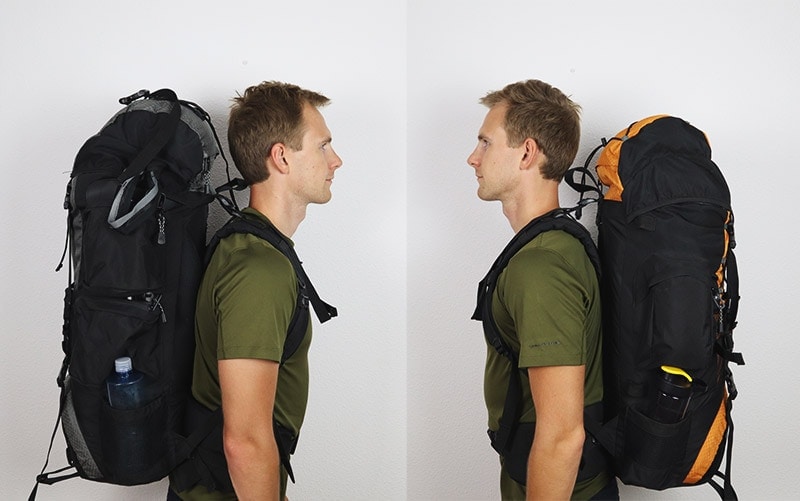
It’s worth noting that if you’re under 28 inches in waist size, neither of these backpacks will fit you. On the Scout 3400, the hip belt (waist size) is adjustable between 28 – 61 in (72 – 155 cm) in diameter, and on the Explorer 4000, between 28 – 70 in (71 – 177 cm). For instance, my girlfriend was too skinny for them, so she couldn’t adjust the hip belt tightly enough. Also, if you’re over 61 inches in waist size, you’ll have to stick with the Explorer 4000, as the Scout 3400 will be too small for you. Personally, I’m 36 inches in the waist, so both of them fit really well.
Both of these backpacks are also adjustable in torso length (the length between your shoulders and hip bones.) It’s done with a massive velcro strap that attaches the shoulder straps to the back of the backpack. You can regulate the height, and the system is identical on both backpacks. The only difference is that they’re adjustable in different lengths. On the Scout 3400, the torso length is adjustable between 15 – 19.5 in (38 – 50 cm), and on the Explorer 4000 between 16 – 20 in (40 – 50 cm). The official measurements are slightly different, and we measured these ones ourselves. For context, I’m about 6 foot 1 / 185 cm in height, and my torso length is about 18 in / 45 cm, so both of them fit me nicely on the medium setting.
Which Backpack Is More Durable?
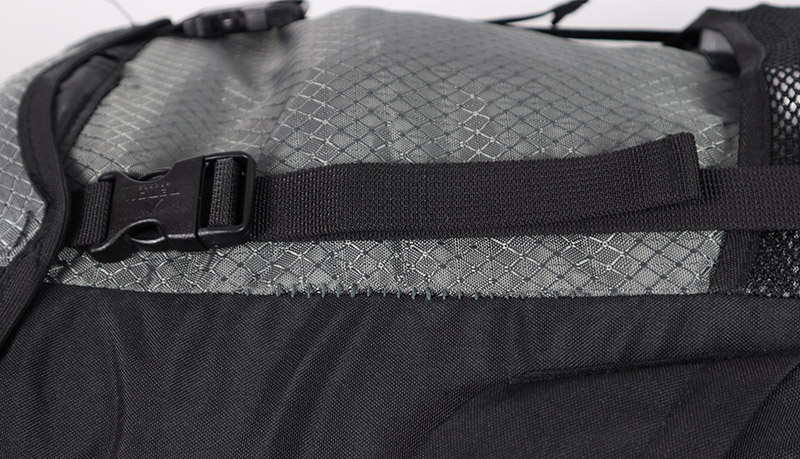
In terms of fabric, straps, buckles, and other hardware, the Scout 3400 is basically identical to the Explorer 4000. They’re both made from thick, 600D polyester, which we tested to be very water-resistant. That said, the seams aren’t seam-sealed, which means that they’ll let through some water anyway. But don’t worry because both of them have waterproof rain covers included at the bottom of the pack. Other hardware, such as zippers, straps, and buckles are all very thick, massive, and seem very durable.
So far, we haven’t had any problems with quality, except for one issue with the Explorer 4000. When we received the pack, a single seam in the middle of the pack was coming loose. It looks like an obvious production defect. So far we haven’t contacted Teton about this, but it should be covered under their Lifetime warranty for defects and materials. But other than that, the stitching seems to be well done everywhere else.
In terms of durability, both of these packs should last over a decade of occasional backpacking. So far we’ve used them for over two years without any issues. Even the loose stitching on the Explorer 4000 hasn’t deteriorated further.
How Do the Scout 3400 and Explorer 4000 Compare to Other Teton Sports Backpacks?
Teton Sports also sells other internal frame backpacks similar to the Scout 3400 and Explorer 4000.
Their most popular alternative is the Teton Sports Ultralight Mountain Adventurer 4000, which is roughly the size of the Explorer 4000, with a volume of 66 liters. The main difference is that it weighs only 4 lbs (1.81 kg), which means that it’s 1 lb (0.45 kg) lighter than the Explorer 4000. It comes with very similar features, except that some of them are better. For example, the water bottle pockets are more stretchy, the main compartment is accessible with a large u-shaped opening, and the hip belt has a large pocket. Its main drawbacks are that it’s slightly less comfortable to wear due to thinner padding and more flexible shoulder straps and hip belt, the top lid slides too far out, leaving a gap for water to enter the main compartment, and it doesn’t come with 3 side pockets as the Explorer does. It’s a good alternative, but we think that for the slightly more expensive price, it doesn’t offer that much more benefits than the Explorer 4000.
Another, slightly smaller, alternative to the Scout 3400 is the Teton Sports Ultralight Hiker 3700 internal frame backpack. It’s 60l in size, so 5 liters more than the Scout 3400. However, it weighs 4 lbs (1.81 kg), or 0.5 lbs (0.23 kg) less than the Scout 3400. It’s essentially very similar to the Scout 3400, except it has larger and better water bottle pockets, two large pockets in the middle of the pack, and another pocket on the hip belt. Its main drawback is that it can handle less weight, and it’s a bit less comfortable than the Scout 3400. Overall, it’s a great alternative, but only for hikers who aren’t carrying more than 40-50 lbs (18-22 kg).
Final Verdict: Which One Should You Choose?
Both of these backpacks are very solid options in the affordable price range. They do compromise a lot on the weight, but in return, you get a beefy, well-made backpack, that’s very comfortable to wear, and is even backed up by a limited lifetime warranty. You can find more affordable packs that are lighter, but usually, they’ll either be very uncomfortable, or they’ll lack in quality. A lot of people have been using the Teton Sports Scout 3400 and the Explorer 4000 backpacks for many years without any issues. We’ve used them for over two years, and we can confirm this.
Personally, We prefer the Scout 3400 over the Explorer 4000. The reasoning is simple – it’s 200 grams (0.5 lbs) lighter, yet it can still easily fit everything we’d need for multiple-day trips. And there’s still some space left. The improved ventilation on the back over the Explorer 4000 doesn’t hurt either. The only thing that bothers us is the system for securing trekking poles to the side of the pack. On Explorer 4000 it’s much more secure and easier to use. That said, if you’re very tall, or if you’re usually bringing very much gear with you (hunting gear, winter camping gear, e.t.c.,) then you should probably opt for the Explorer 4000. It’s basically the same pack, just larger, and with a few minor differences here and there.
Frequently Asked Questions
Is Teton Sports a good brand?
Although Teton Sports products are mostly manufactured overseas, they’re based in the US (established in Utah, in 2005). They mainly focus on selling their products online, with the largest focus on Amazon.
Overall, Teton Sports products are fairly good quality. Of course, they aren’t as durable or ultralight as some of the best outdoor gear brands, like Marmot, Osprey, North Face, and others, but their products are really affordable. And for that price range, we think that they offer some of the most durable and smartly-designed options. They usually don’t focus on ultralight gear, but rather on functionality, comfort, and durability, which is why we usually recommend Teton Products to beginner hikers.
Is the Teton Sports lifetime warranty reliable?
The Teton Sports limited lifetime warranty only covers manufacturing defects. This would include loose stitching, faulty zippers, and other elements which weren’t properly manufactured. So this warranty is by no means the most comprehensive.
However, Teton Sports has really good customer support. Many of their customers have praised fast and helpful their support team is, and in many cases, they fixed the issues under the warranty.
So although Teton Sports warranty terms aren’t the best, their warranty is still pretty reliable.
Are the new 2021 Teton Sports Scout (45, 55, 65 l) and Explorer (65, 75, 85 l) models any different?
There aren’t many differences to the new 2021 Teton Sports Scout and Explorer models.
The Scout 3400 is replaced by Scout 55 l, but it’s also now available in 45 l and 65 l versions. The weight, volume, and dimensions are identical, as with almost all other features. The only differences are that the top lid seems to be slightly more rounded, and the exterior middle pocket seems to be made from slightly more stretchy material, which is a minor improvement.
The Explorer 4000 is now called Explorer 65 l, but it’s also offered in 75 l and 85 l versions. Similar to the Scout, it also has barely any differences. The top lid is a bit more rounded, the exterior middle pocket is made from a more stretchy material, and the top doesn’t include adjustment straps anymore – only fabric loops to add something if needed.
It seems that the 2021 update included minor functional improvements. It mostly only focused on adding more models in different sizes, which is good. Now you can get the same backpack in different sizes, so it’s better optimized for different people and different packing styles.
